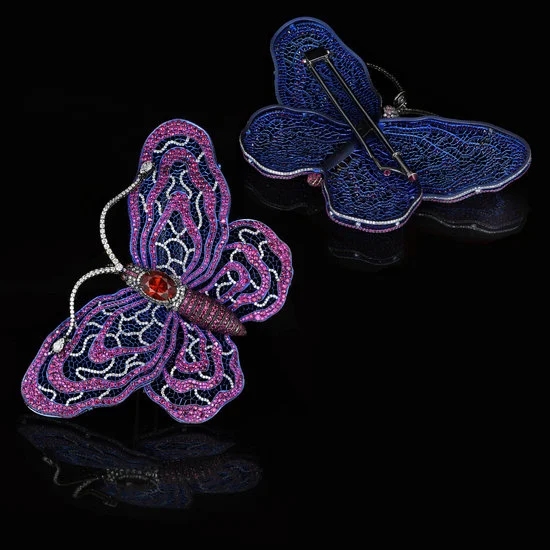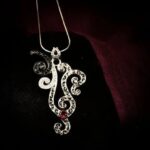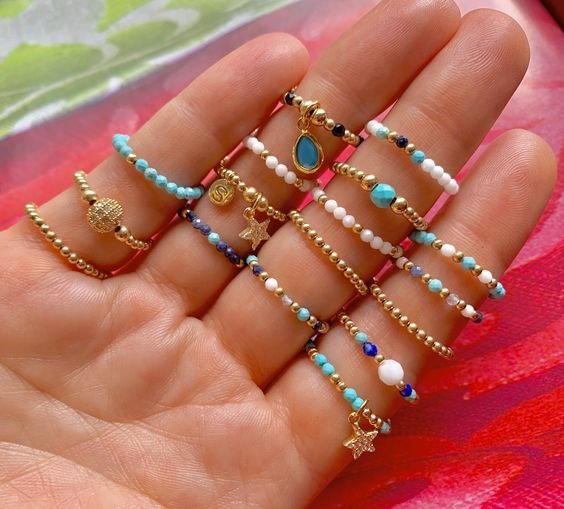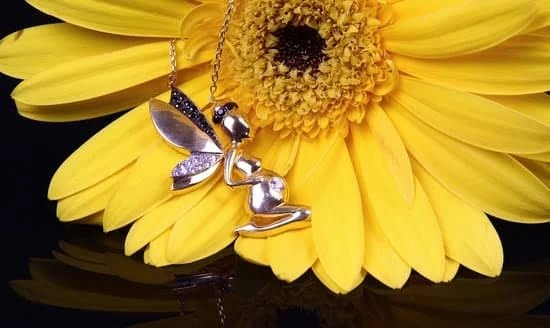Are you interested in learning how to make fine jewelry design? Fine jewelry is a combination of artistry, precision, and attention to detail that results in stunning, high-quality pieces. In this article, we will explore the world of fine jewelry design and the importance of attention to detail and quality craftsmanship.
Fine jewelry design requires a deep understanding of materials, including precious metals and gemstones. Choosing the right materials is crucial in creating jewelry that is not only beautiful but also durable and valuable. We will take a detailed look at various materials used in fine jewelry design and their significance in creating exceptional pieces.
In addition to materials, design inspiration plays a vital role in fine jewelry creation. Nature, art, and cultural influences are just a few sources of inspiration for designers. We will delve into these sources of inspiration and discuss how they shape the creative process for fine jewelry design. Stay tuned as we explore every aspect of fine jewelry design, from initial sketches to final touches.
Understanding Materials
Fine jewelry design involves a meticulous selection of materials to ensure that the finished piece meets the highest standards of craftsmanship and beauty. Precious metals such as gold, silver, and platinum are commonly used in fine jewelry design due to their durability, luster, and value. Gold, in particular, comes in various colors including yellow, white, and rose, providing designers with a wide range of options for creating stunning pieces.
Additionally, gemstones play a significant role in fine jewelry design, adding color, brilliance, and luxury to the finished piece. From diamonds and sapphires to emeralds and rubies, each gemstone holds its own unique allure.
One of the key aspects of understanding materials in fine jewelry design is the significance of choosing the right materials for a specific design concept. Factors such as color coordination between metals and gemstones or the structural integrity required for a particular design must be carefully considered.
For example, certain designs may call for softer metals like gold or silver to achieve intricate detailing, while others may require the strength and resilience of platinum. Likewise, understanding the properties of different gemstones is essential in ensuring compatibility with the overall design vision.
In learning how to make fine jewelry design more effective through material selection requires deep knowledge about precious metals and gemstones as well as an understanding of their characteristics. Designers must also stay abreast of industry trends to innovate using new materials or unconventional combinations that capture contemporary tastes while upholding traditional craftsmanship values.
| Material | Importance |
|---|---|
| Precious Metals | Durability, luster and value. Different colors available. |
| Gemstones | Adds color, brilliance and luxury to finished pieces. Unique allure. |
Design Inspiration
Designing fine jewelry requires not only technical skill but also a strong source of inspiration. The world around us is filled with endless possibilities for creating unique and beautiful pieces. Whether it’s the natural beauty of landscapes, the intricate details of art, or the rich cultural influences from around the world, there are countless sources to draw inspiration from.
Nature as Inspiration
Nature has always been a powerful muse for jewelry designers. The organic shapes, vibrant colors, and unique textures found in nature can inspire one-of-a-kind designs. From the delicate petals of a flower to the graceful curves of a seashell, nature provides an endless array of inspiration for fine jewelry design.
Artistic Influences
The world of art offers an abundance of creative ideas for jewelry design. From iconic paintings and sculptures to modern abstract art, artists across various mediums have created masterpieces that can serve as inspiration for intricate and innovative jewelry designs. Drawing from artistic influences allows designers to infuse their work with meaning and symbolism.
Cultural Influences
Cultural diversity can also play a significant role in fine jewelry design inspiration. Traditional symbols, motifs, and craftsmanship techniques from different cultures provide a rich tapestry of ideas for creating meaningful and culturally significant pieces. By understanding and respecting different cultural influences, designers can craft jewelry that honors traditions while adding their own unique interpretation.
Understanding these diverse sources of inspiration is essential in creating truly remarkable fine jewelry designs. By incorporating elements from nature, art, and culture into their work, designers can infuse each piece with depth and significance, ensuring that their creations resonate with both the wearer and admirer alike.
Sketching and Concept Development
When it comes to creating fine jewelry designs, the process of sketching and concept development plays a crucial role in bringing ideas to life. Whether you are an experienced designer or just starting out, having a clear understanding of how to approach sketching and concept development can greatly enhance the quality and creativity of your designs. Here is a step-by-step guide on how to make fine jewelry design through sketching and concept development:
1. Gather Inspiration: Before you begin sketching, it’s important to gather inspiration from various sources such as nature, art, architecture, or cultural influences. Take the time to explore different elements that resonate with you and ignite your creativity.
2. Initial Sketches: Start by making rough sketches of your initial ideas. Don’t worry about perfection at this stage; focus on capturing the essence of your concept and exploring different shapes and forms.
3. Refine Details and Proportions: Once you have a few initial sketches, choose the most promising concepts and start refining the details and proportions. Pay attention to the scale of gemstones, the placement of metalwork, and other intricate elements that will define your design.
4. Create Detailed Renderings: Use rendering techniques to create more detailed drawings of your refined concepts. This will help you visualize how the design will look in its final form and allow for any necessary adjustments before moving on to prototyping.
By following these steps, you can effectively develop your fine jewelry designs from initial concepts to detailed renderings, ensuring that every aspect is carefully considered before moving forward with production.
CAD Design
The Role of CAD in Fine Jewelry Design
Computer-aided design (CAD) has revolutionized the way fine jewelry is designed and produced. This technology allows designers to create detailed, intricate designs in a digital format before they are brought to life as physical pieces.
CAD software offers a range of tools and features that enable designers to experiment with different shapes, textures, and settings to bring their vision to life. By using CAD, designers can also make precise adjustments to their designs, ensuring that every detail is meticulously crafted before production begins.
Creating Realistic Renderings
One of the key advantages of using CAD in fine jewelry design is the ability to create realistic renderings of the final piece. Designers can apply different materials and finishes to their digital models, allowing them to see how the piece will look once it is crafted in metal and adorned with gemstones. This not only helps designers visualize the finished product but also allows clients to see an accurate representation of the piece before it is actually created.
Streamlining the Production Process
In addition to bringing designs to life in a digital format, CAD technology plays a crucial role in streamlining the production process for fine jewelry. Once a design has been finalized in CAD, it can be used to generate precise instructions for machining or casting the piece.
This ensures that each element of the design is accurately reproduced during production, resulting in high-quality finished pieces that match the original concept perfectly. With CAD, designers can also make modifications more efficiently, saving time and resources during the production phase.
Overall, understanding how to make fine jewelry design utilizing CAD technology is essential for modern jewelry designers looking for precision, efficiency, and unparalleled attention to detail in their work.
Prototyping and Model Making
When it comes to fine jewelry design, the process of creating physical prototypes and models is a crucial step in bringing a design from concept to reality. This phase allows designers to test the feasibility of their designs, make any necessary adjustments, and ensure that the final piece will meet the highest standards of craftsmanship. The prototyping and model making process can involve various techniques and materials, depending on the complexity of the design.
One important aspect of prototyping and model making is the use of 3D printing technology. This innovative tool allows designers to create accurate representations of their designs, providing a tangible prototype that can be evaluated for its aesthetic appeal and functionality before moving forward with production. Additionally, traditional model-making techniques such as wax carving and metal fabrication are also commonly used in fine jewelry design to create physical prototypes that showcase the intricate details of a design.
Another key component of this phase is conducting thorough testing and evaluation of the prototype. Designers must pay close attention to factors such as comfort, wearability, balance, and overall visual impact. Any necessary adjustments should be made at this stage to ensure that the final piece not only meets design expectations but also offers exceptional quality for the wearer.
Moreover, collaboration between designers, craftsmen, gemologists, and other experts is essential during the prototyping and model making process. This collaborative effort ensures that every aspect of the design – from stone setting to metalwork – is thoroughly evaluated in order to achieve excellence in fine jewelry creation.
| Phase | Activity |
|---|---|
| Prototyping | Creating physical prototypes using 3D printing or traditional model-making techniques |
| Evaluation | Thoroughly testing prototype for comfort, wearability, balance, visual impact |
| Collaboration | Working with craftsmen, gemologists & experts for comprehensive evaluation during prototyping process |
Stone Setting and Metalwork
When it comes to stone setting, there are several techniques that skilled artisans use to secure gemstones in jewelry. Some common stone setting techniques include:
- Prong setting: This involves using metal prongs to hold the gemstone in place, allowing for maximum light exposure and showcasing the stone’s brilliance.
- Bezel setting: In this technique, a metal rim is used to encircle the gemstone, providing a secure and stylish way to set stones.
- Pave setting: Tiny stones are set closely together with minimal visibility of the metal holding them in place, creating a continuous sparkle across the piece.
In addition to stone setting, the art of metalwork in fine jewelry design is equally important. Metalworkers use various techniques to shape precious metals into intricate designs and structures. Some common metalworking techniques include:
- Repoussé: A technique where metal is shaped or decorated with patterns using hammers and punches from the reverse side.
- Filigree: Delicate strands of twisted wire or tiny beads are soldered together to create intricate patterns and designs on the surface of the jewelry.
- Engraving: Using specialized tools, artisans can carve detailed designs or patterns onto the surface of metal pieces, adding an extra layer of sophistication.
Mastering these stone setting and metalwork techniques is essential for creating fine jewelry that not only looks stunning but also stands the test of time. The attention to detail and precision required in these processes is what sets fine jewelry apart from mass-produced pieces.
By understanding and embracing these intricate techniques, designers can elevate their creations and produce truly exceptional works of art. With dedication and practice, aspiring jewelers can hone their skills in stone setting and metalwork to bring their unique vision to life in every piece they create.
Quality Assurance and Final Touches
In the world of fine jewelry design, quality assurance and final touches play a crucial role in ensuring that each piece meets the highest standards of craftsmanship and beauty. As designers and makers of fine jewelry, it is imperative to pay close attention to every detail during the production process, from the selection of materials to the final finishing touches. This level of care and precision is what sets fine jewelry apart, making it a true work of art.
One essential aspect of quality control in fine jewelry design is ensuring that the materials used are of the finest quality. Whether it’s precious metals such as gold or platinum, or gemstones like diamonds and sapphires, each material must be carefully inspected for its purity, color, and overall aesthetic appeal. Furthermore, the techniques used in stone setting and metalwork must be executed with precision to truly showcase the beauty of these materials.
The final touches in fine jewelry design can elevate a piece from exquisite to extraordinary. From intricate engraving details to meticulously polished surfaces, every element must come together seamlessly to create a flawless work of art.
It is through these meticulous processes that designers and makers can truly manifest their vision into stunning pieces that stand the test of time. In conclusion, understanding how to make fine jewelry design involves an unwavering commitment to quality control and perfecting final touches to ensure that each piece reflects the highest standards of craftsmanship and beauty.
Frequently Asked Questions
How Do You Become a Fine Jewelry Designer?
Becoming a fine jewelry designer typically involves a combination of formal education, specialized training, and practical experience. Many designers pursue a degree in jewelry design or attend specialized design courses to learn the technical skills and artistic techniques necessary for creating fine jewelry.
Building a strong portfolio of original designs is also crucial for establishing credibility in the industry. Networking with other designers, jewelers, and industry professionals can also provide valuable opportunities for learning and growth in this competitive field.
How to Create Jewelry Designs?
Creating jewelry designs requires a blend of creativity, technical skills, and attention to detail. It often starts with conceptualizing ideas through sketches or computer-aided design (CAD) software. Understanding the properties of different metals and gemstones is essential for designing pieces that are both visually appealing and structurally sound.
Prototyping and testing designs may be necessary to ensure their feasibility before moving on to production. Using traditional tools like wax carving or modern techniques like 3D printing can help bring these designs to life.
What Do I Need to Make Fine Jewelry?
Crafting fine jewelry typically requires a range of specialized tools and materials, including precious metals such as gold, silver, or platinum; gemstones like diamonds, rubies, or sapphires; as well as various equipment for shaping, soldering, casting, and engraving. Techniques such as stone setting, filigree work, and metal fabrication may also be part of the jewelry-making process.
Access to a well-equipped workshop with ventilation systems and safety measures is important for working with these materials effectively and safely. Additionally, having knowledge of ethical sourcing practices and sustainability in the sourcing of materials has become increasingly important in contemporary fine jewelry making.

Welcome to my jewelry blog! My name is Sarah and I am the owner of this blog.
I love making jewelry and sharing my creations with others.
So whether you’re someone who loves wearing jewelry yourself or simply enjoys learning about it, be sure to check out my blog for insightful posts on everything related to this exciting topic!





